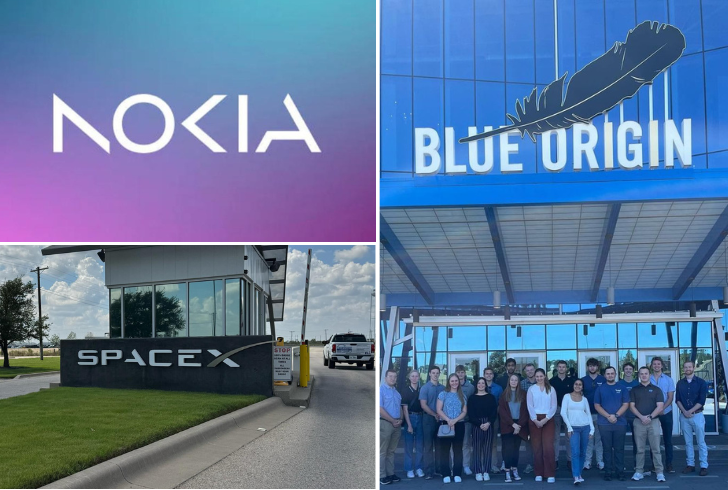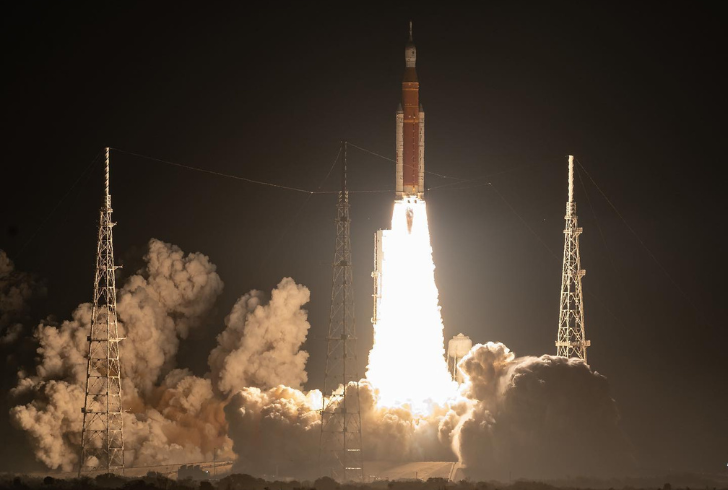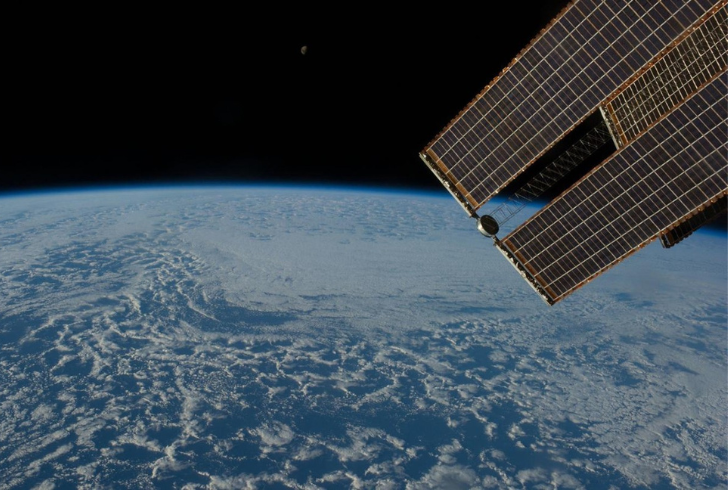In a bid to return astronauts to the moon by the end of the decade, NASA is not just aiming for a scientific milestone but is diving headfirst into a lunar business revolution. The Artemis missions, set to create the first human settlements beyond Earth, are unleashing a new frontier of opportunities worth over $100 billion.
Private companies such as SpaceX, Blue Origin, Nokia, Lockheed Martin, and General Motors have joined forces with NASA to shape the future of lunar exploration. This collaborative effort goes beyond the theoretical; it’s a tangible step towards commercializing the moon.

Instagram | SpaceX, Blue Origin and Nokia have joined forces with NASA.
Artemis Unleashed: Beyond Apollo’s Horizon
Unlike the Apollo missions, Artemis is not about testing whether humans can reach the moon; it’s about establishing a permanent presence. The goal is to transform the moon into a bustling hub of human and robotic activity, not just a pit stop on the way to Mars. This ambitious plan opens up vast commercial avenues, and NASA is keen on leaving a legacy of commerce and routine living beyond our planet.
Opportunities for commercial development abound as Artemis progresses. The Artemis missions envision extended stays on the lunar surface, leading to the creation of lunar base camps. This sets the stage for a future where the moon becomes a stepping stone for further exploration and a potential pit stop on the way to Mars.
Mining the Moon: A Lunar Gold Rush
The moon’s commercial allure lies in its abundant resources. In-situ resource utilization is the key, involving the mining and exploitation of lunar resources directly on the moon. Among the commercially interesting resources is regolith, or moon dust, which holds potential for clean energy production on Earth and construction on the moon itself.
Moon mining isn’t just about dust; it’s about tapping into the moon’s rare-earth elements and, most notably, its water caches. Water, discovered near the moon’s poles, could be a game-changer. It could be extracted and converted into fuel, extending lunar missions and fueling rockets en route to Mars, making the moon a vital pit stop in our journey to the red planet.
Commercial-First Approach: NASA’s Lunar Business Strategy

Instagram | Artemis is not just a mission; it’s a strategy to empower the commercial sector.
Artemis is not just a mission; it’s a strategy to empower the commercial sector in space exploration. NASA’s shift towards a commercial-first mindset, initiated by President George W. Bush, involves collaborating with private companies to reduce costs and spur innovation. This approach has birthed giants like Blue Origin and SpaceX, essential players in the race to the moon.
NASA’s investment in infrastructure, such as uncrewed robotic landers and contracts with companies like Astrobotic Technology, is driving the development of cost-effective Earth-to-moon deliveries. These investments pave the way for sustained commercial activity on the lunar surface.
The Lunar Marketplace: More Than Just Rocks
The lunar market extends far beyond mining and infrastructure. Navigation, communication, and creature comforts for future moon settlers are also in high demand. NASA’s collaboration with Nokia aims to provide the moon with a 4G network by 2024, creating a vital communication infrastructure.
Meanwhile, the race for rocket development is the most lucrative aspect of the lunar market. Companies like SpaceX and Blue Origin are leading this charge, promising not only cost-effective launches but also reusable rocket technology that could reshape the future of space exploration.
The Space Race Redux: Politics and Competition

Instagram | 24 nations signing the Artemis Accords.
Beyond the commercial prospects, a new space race is underway, driven by political motives and global competition. With over 24 nations signing the Artemis Accords, the race to establish a presence on the moon is intensifying. The fear of geopolitical rivals, particularly China, claiming lunar territories is pushing the United States and its allies to speed up lunar exploration.
In this space race of the 2020s, the first-mover advantage is crucial. While the US and China have agreed not to militarize or claim the moon under the Outer Space Treaty, the race to set standards and infrastructure on the lunar surface is paramount. Liberal democracies are aiming to secure their foothold, realizing that whoever gets there first has a say in writing the rules for the lunar marketplace.
Beyond the Horizon
As the moon opens its doors to business, the possibilities are vast and thrilling. Entrepreneurs, scientists, and policymakers are collaborating to turn the moon into a bustling hub of commerce and exploration. The journey may have started with NASA, but the lunar marketplace is evolving into a global endeavor, driven by innovation, competition, and the shared dream of humanity reaching for the stars.







